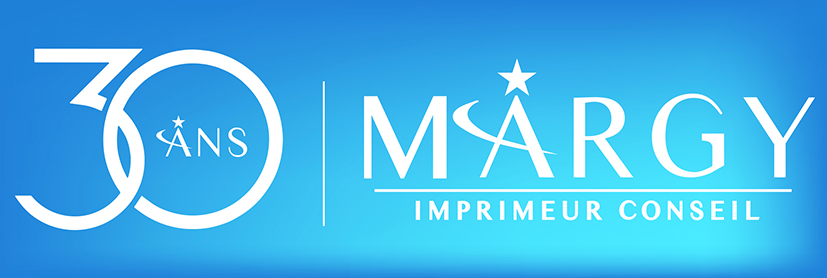Faced with a depressed economic climate, the commercial printing sector is increasingly seeking to reinvent itself by diversifying its activities. These are not good times for printers, who for several years have had to contend with a fall in demand from both professional and private customers, and the resulting exacerbation of competition. As a result, printers are having to move away from an all-print approach in order to expand their markets, by devising new strategic directions that will see their business model evolve.
Large format printing
The fast-expanding visual communications markets represent a way of diversifying print. Thanks todigital printing, large format printing is accessible to printers through the acquisition of low-cost equipment. To conquer these new markets, printers may also need to develop delivery services (such as for events), installation services (for distribution in particular) and even connected screens.
The web-to-print customer interface
Through web-to-print, printers set up a website that allows individuals to order printed documents directly online (B2C) or professionals to manage their printing collaboratively (B2B). By renewing customer relations, web-to-print solutions make it possible to attract new customers interested in print over a wide catchment area, streamline communication between the printer and its customers, simplify the purchasing process and optimise the use of production equipment.
Website design
At the heart of a strategy to build customer loyalty, the development of a website design service represents an additional service for a printing company. By focusing on customer satisfaction, printers can offer a complete communications solution, from graphic design to print and web design, as well as consultancy. By offering a wide range of services, this positioning provides an opportunity to strengthen customer relations and increase orders.
Adhesive
With the development of digital rotary printing, the adhesive sector has opened up to traditional printers looking to diversify their activities. With the market for self-adhesive labels growing strongly, the investment required is quickly proving profitable for printers offering a complementary service to print. With a promising future ahead of us, the advantages of adhesive labels also lie in the technological innovations that have been made to digital rotary presses, enabling them to become even more productive.
Printed electronics
Printing on industrial substrates such as NFC or RFID tags, OLED lighting, biomedical sensors, batteries, printed circuits, etc. is a diversification that involves running a workshop on the customer’s premises. However, offering a smart (or communicating) paper segment in addition to print offers real opportunities for developing high value-added markets linked to technological changes in printed electronics.
The advent of digital technology has, on the one hand, weakened the printing industry by making it more competitive and, paradoxically, on the other hand, has enabled it to improve the quality of its products, boost its productivity and competitiveness and diversify its offering. Faced with the current crisis, printers have real strategic opportunities to bounce back, conquer new markets and enhance the value of print.
Other articles :
 01 44 52 02 02
01 44 52 02 02
